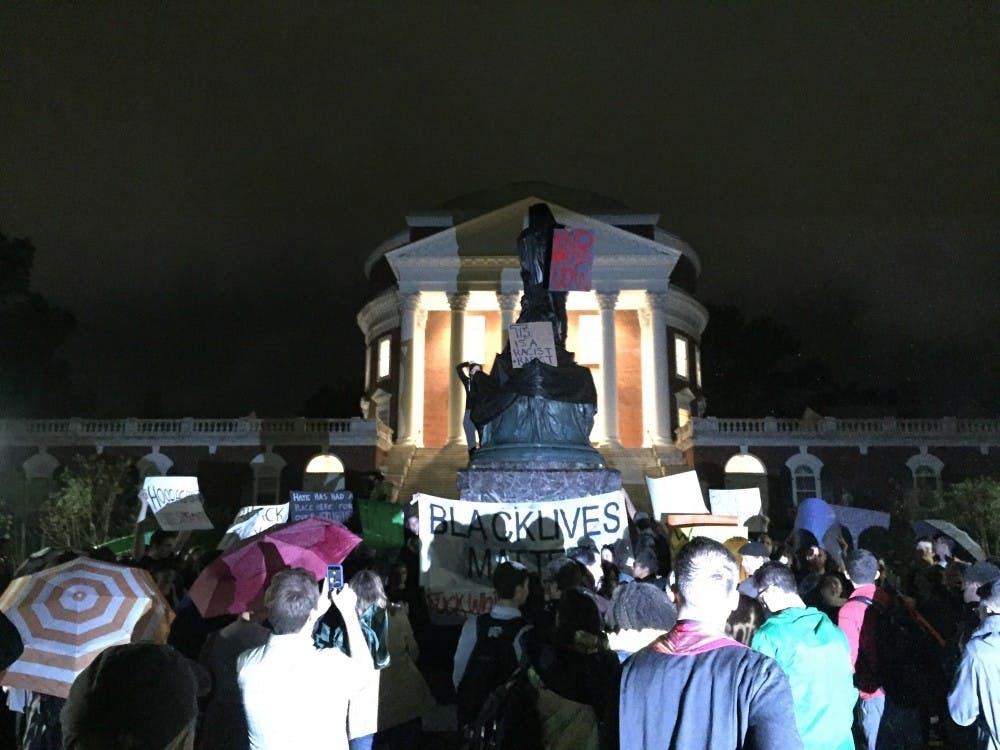In October of 1937, the Soviet Union under Stalin oversaw the removal of famed sculptor Paolo Troubetzkoy’s statue of Tsar Alexander III from Vosstaniya Square in Saint Petersburg. Along with statues, books and churches from the tsarist era also fell victim to the communist regime. The systematic destruction of Russia’s cultural heritage was deemed an essential step in the Marxist revolution, in order to erase any lingering attachment to the old-world order. The University recently experienced the essence of this destruction when, on Tuesday Sept. 12, protesters from several student organizations arrived at the Rotunda to shroud the Thomas Jefferson statue in a black tarp. Claims regarding the motivation behind the demonstration are varied, with some protesters condemning President Teresa Sullivan’s response to the white supremacist rally of Aug. 11 and others attempting to honor the rally’s victims. Regardless of justifications, the defacement of a UNESCO World Heritage site commemorating the University’s founder is absolutely unacceptable and ought to be more widely and explicitly denounced by the University community.
Sullivan responded to the demonstration by releasing a statement to students and alumni, in which she alluded to the deeply-rooted culture of protest on Grounds — referencing the Vietnam War, Watergate and 9/11. In the late 1960s, students and faculty members alike embraced the Civil Rights movement, planning frequent marches and sit-ins in support of desegregation. While historic demonstrations for minority rights and the Sept. 12 protest appear comparable at face-value, distinctions in their underlying messages arise. The beauty of the Civil Rights activism of the 1960s lies in its goal to fulfill the American promise of equality and personal liberty to all citizens. At the core of the movement was the struggle for Constitutional rights so deeply cherished by Jefferson and his fellow founders. Instead of fulfillment of this promise, the protesters represented eradication by covering a monument representing the then-radical values of the Declaration of Independence and the Constitution. The blatant irony of the protest is impossible to avoid. Student demonstrators freely violated the statue by virtue of Jefferson’s relentless endeavor for a Bill of Rights.
Perhaps not by coincidence, the students who defiled a symbol of freedom of speech are the same ones who readily shut down opposing viewpoints. We saw this phenomenon on Tuesday, when spectators and pedestrians were harassed with chants of “Stop staring! Start fighting!” for not partaking in the protest. The conflation of those in opposition to their goals with those who are undecided is the kind of moral self-righteousness which prevents any mode of productive discourse. Active misrepresentation of opposing perspectives is a vital strategy employed in recent protest culture. In this particular case, challengers of the shrouding are either identified as indifferent to the darker side of the University’s legacy or proud of it. The memorialization of Jefferson, however, was intended to sanctify principles — like individual liberties and public education — which define the character of our University and the nation as a whole. The crucial distinction between the Jefferson statue and Confederate soldier memorials manifests in the values which they embody.
The story of our nation’s founders — like the story of our nation — must be studied and scrutinized with nuance. We owe our country an active engagement with its past. This engagement, however, can be conducted with respect and without an unconditional claim to moral superiority. The Constitution and its enactment, however imperfect, grant every citizen a vow of tolerance and freedom. While the fight to fulfill this vow is far from over, we grow closer to fruition each day, and delegitimizing every historically tainted figure or institution is counterproductive toward that end.
Charlotte Lawson is an Opinion Columnist for The Cavalier Daily. She can be reached at opinion@cavalierdaily.com.







